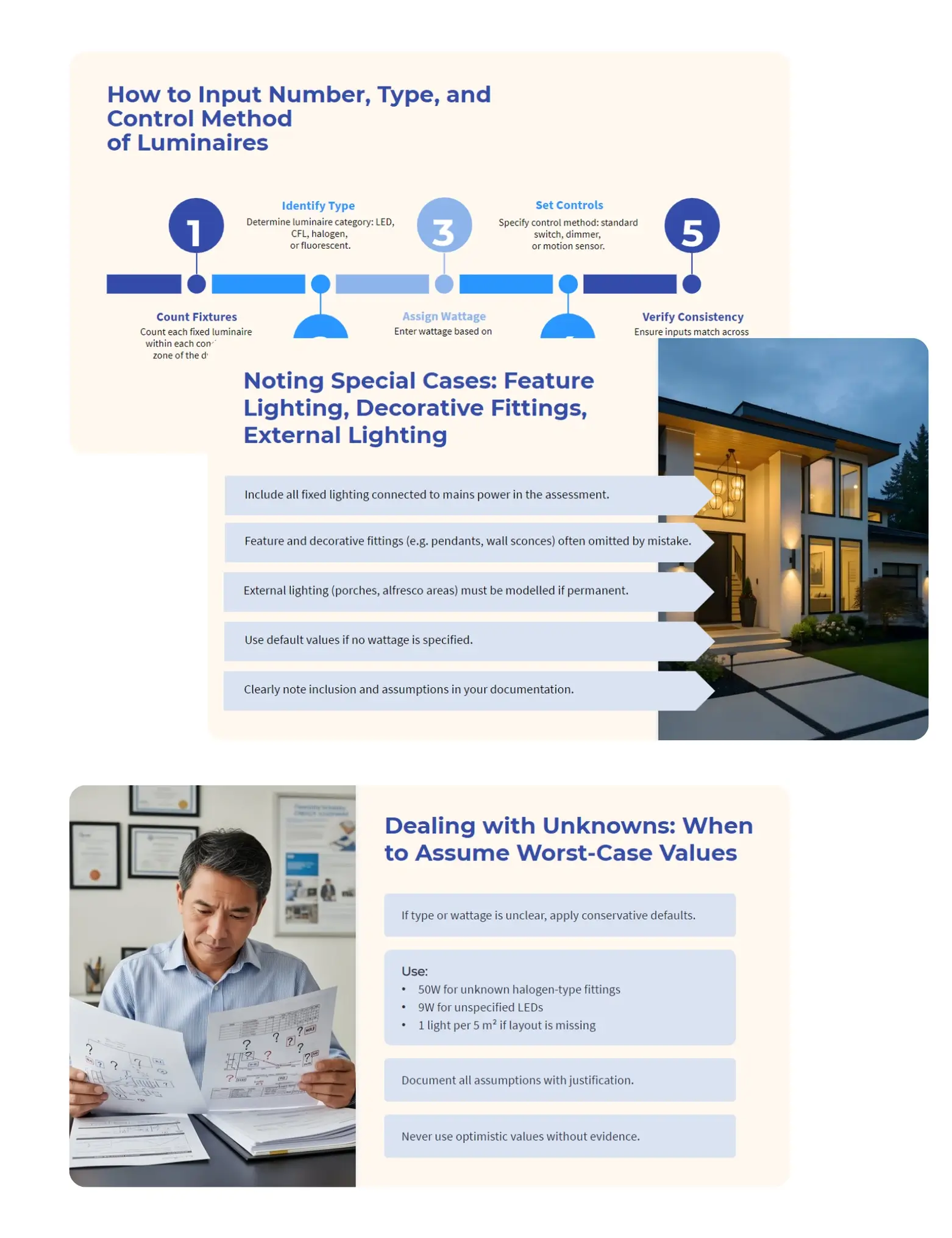Course Content
★★★★★
This formal CPD course is designed specifically for accredited energy assessors working within the NatHERS (Nationwide House Energy Rating Scheme) framework in Australia. It targets professionals responsible for interpreting architectural lighting plans and translating them into compliant, audit-ready inputs for Whole-of-Home (WoH) energy assessments. The course assumes prior familiarity with energy modelling software such as BERS Pro, FirstRate5, or HERO, and guides assessors through best practices in data extraction, documentation, and regulatory compliance. It aims to bridge the knowledge gap between design documentation and energy compliance requirements, especially in light of NCC Section H6 and NatHERS Technical Notes. Overall, it’s geared toward assessors aiming to improve modelling accuracy, audit success, and confidence in handling lighting-related energy inputs.

This session is designed for

Energy Assessors

Building Surveyors

Building Designers

Builders

Architects
By the end of this course, you will understand how lighting influences energy performance in Whole-of-Home assessments. You’ll be able to accurately extract lighting details from architectural drawings and input them into NatHERS tools using either defaults or verified manufacturer data. You will also know how to document modelling decisions clearly to meet audit requirements. Ultimately, you’ll be equipped to model lighting confidently and compliantly in line with NCC and NatHERS standards.
This ensures that CPD efforts align with professional regulatory requirements.
What’s Included
This course covers the role of lighting in Whole-of-Home energy assessments and its impact on compliance with NatHERS and the NCC. It guides participants through the process of extracting accurate lighting data from architectural drawings, including luminaire types, control methods, and mounting styles. The course also explains how to input lighting data into NatHERS tools using default values or verified specifications. Finally, it provides best practices for documentation and audit readiness to ensure transparent and compliant modelling.

Why Take This CPD Session?

Enhance your ability to model lighting accurately and compliantly within Whole-of-Home energy assessments.

Reduce the risk of audit failures by learning how to document lighting assumptions and use defaults correctly.

Stay up to date with NatHERS and NCC requirements, gaining practical skills you can apply immediately in your assessments.
Professional development is an investment in career growth and regulatory compliance. Take the next step today.